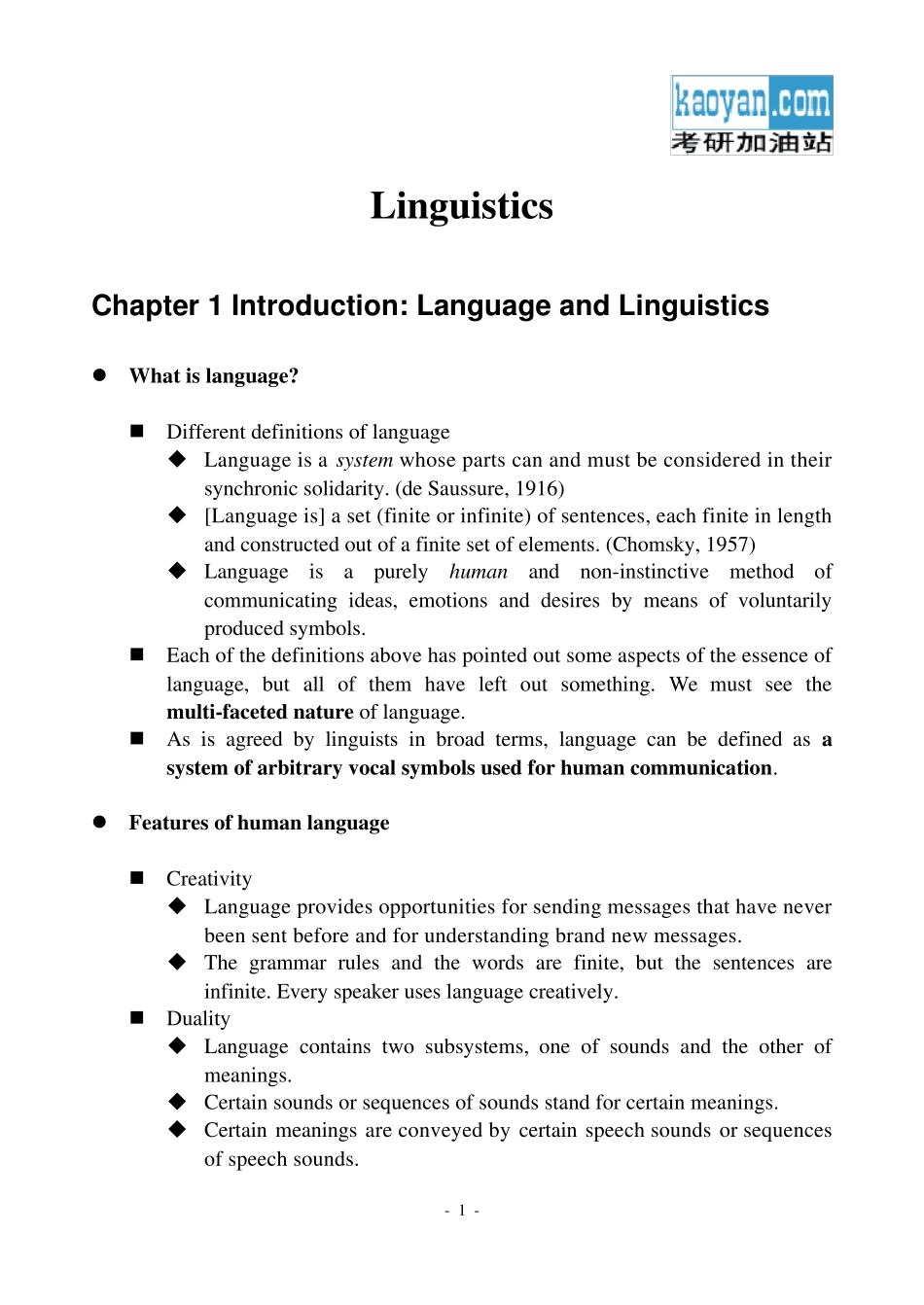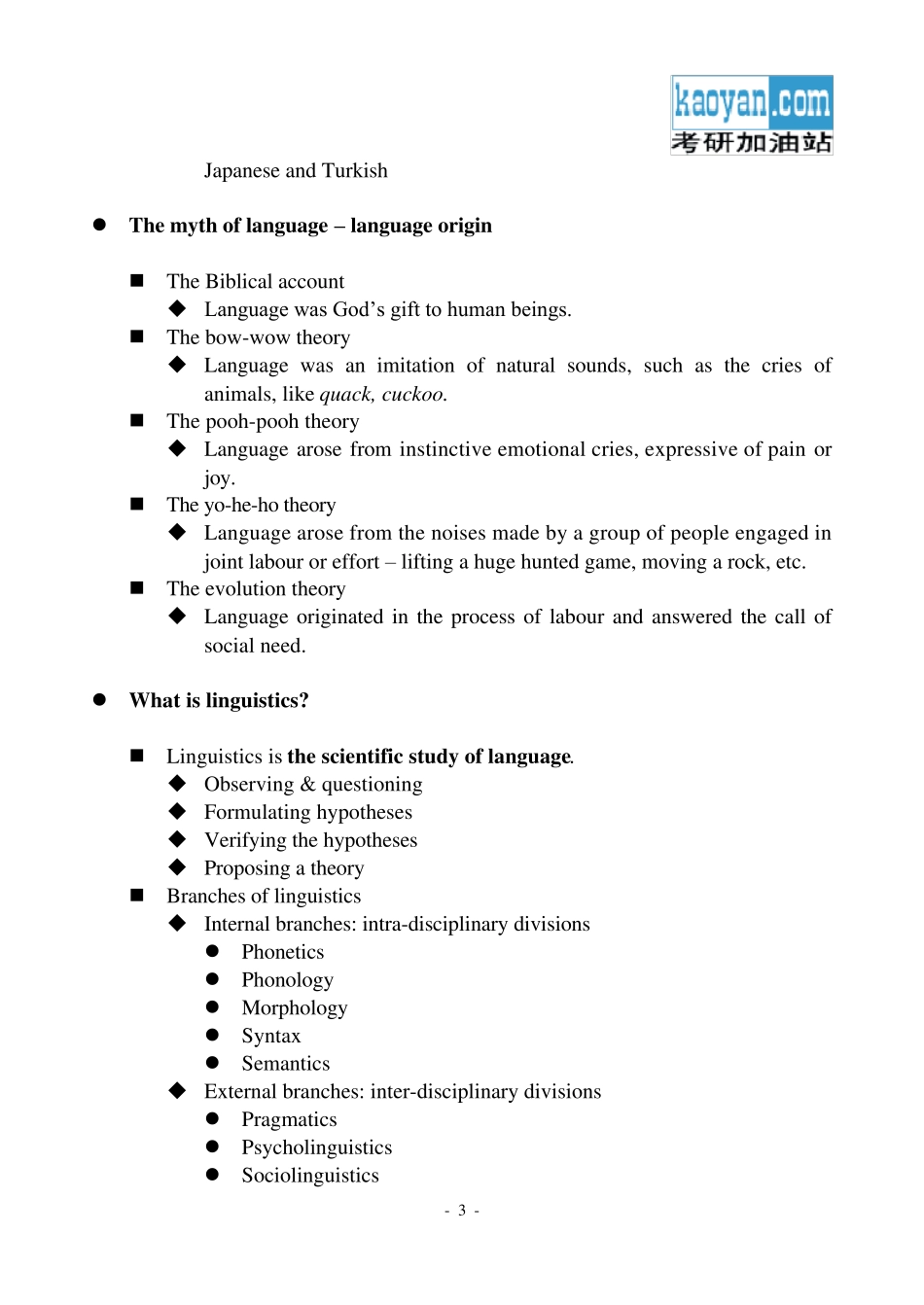- 1 - Linguistics Chapter 1 Introdu ction: Langu age and Lingu istics What is language? Different definitions of language Language is a system whose parts can and must be considered in their synchronic solidarity. (de Saussure, 1916) [Language is] a set (finite or infinite) of sentences, each finite in length and constructed out of a finite set of elements. (Chomsky, 1957) Language is a purely human and non-instinctive method of communicating ideas, emotions and desires by means of voluntarily produced symbols. Each of the definitions above has pointed out some aspects of the essence of language, but all of them have left out something. We must see the multi-faceted nature of language. As is agreed by linguists in broad terms, language can be defined as a system of arbitrary vocal symbols used for human communication. Features of human language Creativity Language provides opportunities for sending messages that have never been sent before and for understanding brand new messages. The grammar rules and the words are finite, but the sentences are infinite. Every speaker uses language creatively. Duality Language contains two subsystems, one of sounds and the other of meanings. Certain sounds or sequences of sounds stand for certain meanings. Certain meanings are conveyed by certain speech sounds or sequences of speech sounds. - 2 - Arbitrariness The relationship between the two subsystems of language is arbitrary. There is no logical connection between sound and meaning. Displacement There is no limit in time or space for language. Language can be used to refer to things real or imagined, past, present or future. Cultura...


